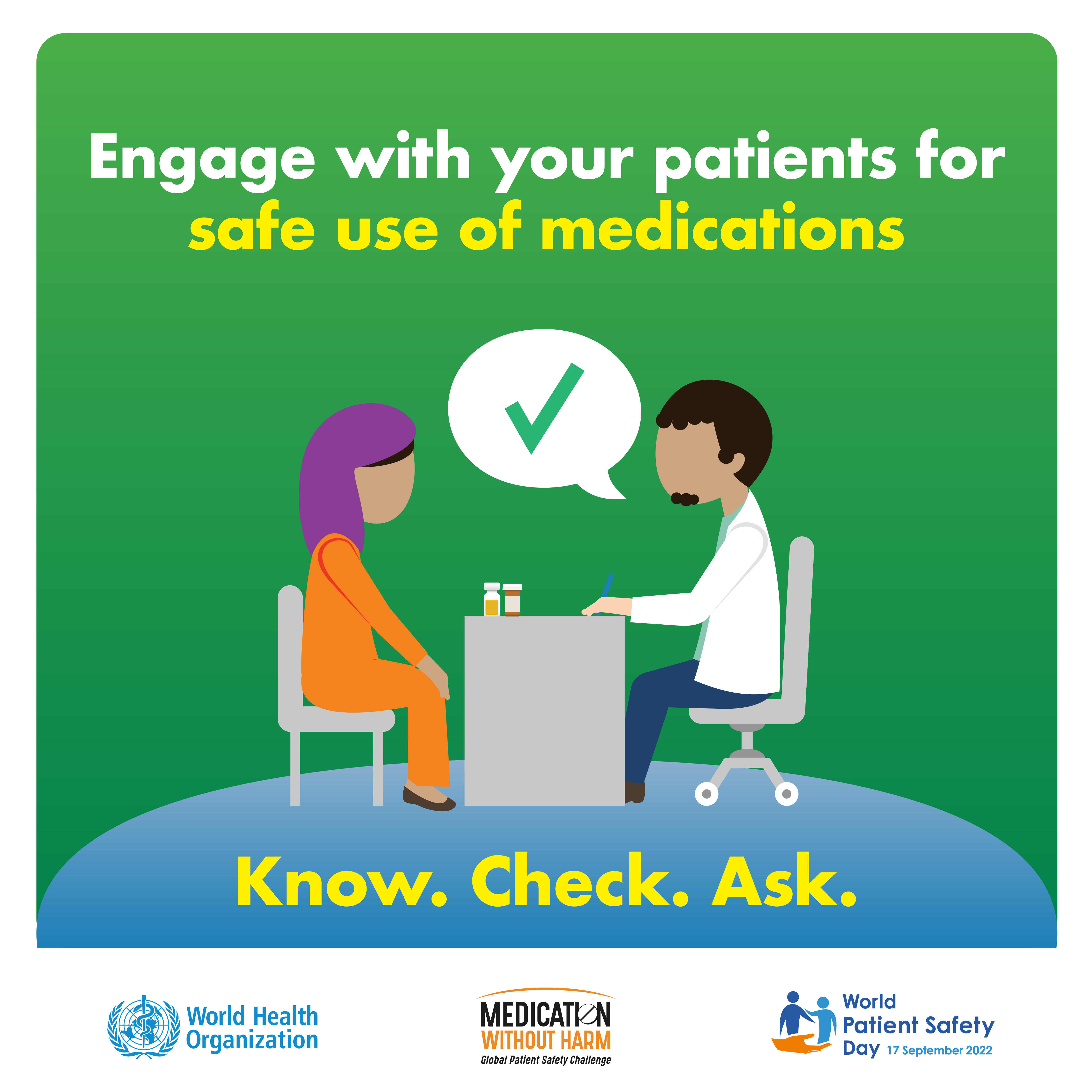Engaging Patients for Patient Safety: A Vital Step Towards Quality Healthcare

World Patient Safety Day 2023 is dedicated to the theme “Engaging patients for patient safety” and the slogan “Elevate the voice of patients!”. The day aims to influence stakeholders including patients, families, policy makers, health care leaders, health workers and patient organizations to work collaboratively towards co-designing health care policies and safety interventions that truly reflect the needs and preferences of patients, ultimately enhancing healthcare safety globally. Patient safety is a critical aspect of healthcare delivery, and it encompasses various strategies and practices aimed at minimizing harm and ensuring the well-being of patients.

While healthcare professionals play a significant role in providing safe care, engaging patients actively in their own safety is equally crucial. In recent years, there has been growing recognition of the need to involve patients in their care, leading to the emergence of the concept of “engaging patients for patient safety.”
Engaging patients for patient safety refers to actively involving patients in decisions about their healthcare, empowering them to become partners in their own safety journey. It goes beyond simply providing information to patients and instead focuses on fostering collaborative relationships between healthcare providers and patients. This approach recognizes that patients possess unique insights into their own condition and experiences, which can contribute to identifying and mitigating potential risks.

Research studies have highlighted the benefits of engaging patients for patient safety. A qualitative study conducted on healthcare recipients’ perspectives 1 found that involving patients in their care led to increased awareness of potential risks, improved communication between patients and healthcare providers, and enhanced patient satisfaction. Patients who actively participated in their safety reported feeling more empowered and better equipped to navigate their healthcare journey.
One of the key elements of engaging patients for patient safety is the promotion of shared decision-making. Shared decision-making involves healthcare providers and patients collaborating to make informed decisions about treatment options, considering the patient’s values, preferences, and goals. This approach allows patients to actively participate in their care, leading to better outcomes and increased patient satisfaction 2 .
Furthermore, patient engagement can be facilitated through effective communication strategies. Enhancing communication between patients and healthcare providers establishes a foundation of trust and ensures that patients are well-informed about their condition, treatment options, and potential risks. This can be achieved through clear and understandable explanations, active listening, and encouraging patients to ask questions and express their concerns 3.
Patients often have unique insights into their health and can sometimes identify errors or safety concerns that healthcare professionals might overlook. Encouraging patients to actively participate in their care can lead to the early detection and prevention of medical errors.

Engaged patients are more likely to be knowledgeable about their medications, including their names, dosages, and potential side effects. This awareness can help prevent medication errors and adverse drug reactions. They can act as advocates for their own safety. They can speak up if they observe unsafe practices, inadequate hand hygiene, or other lapses in infection control measures, contributing to a safer healthcare environment.
Patients can play an active role in infection prevention by following hand hygiene guidelines and other infection control measures. When patients are engaged in their care, they are more likely to comply with these measures, reducing the risk of hospital-acquired infections.
Patient engagement promotes health literacy, helping patients understand their health conditions, treatment plans, and the importance of follow-up care. This can lead to better adherence to treatment and improved health outcomes.

Engaging patients in their care often leads to higher levels of patient satisfaction. Patients who feel heard, respected, and involved in their healthcare journey are more likely to have a positive overall experience with healthcare services.
In conclusion, engaging patients for patient safety is a multifaceted approach that has the potential to significantly enhance the quality and safety of healthcare. It promotes collaboration, transparency, and empowerment, ultimately leading to better health outcomes and a safer healthcare environment for all stakeholders. Healthcare providers, policymakers, and patients themselves should actively promote and support patient engagement as an integral part of modern healthcare.



